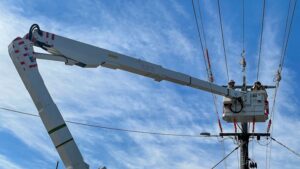
A groundbreaking study led by Dr. Hee-Eun Song from the Korea Institute of Energy Research (KIER) and Professor Ka-Hyun Kim from Chungbuk National University (CBNU) has identified specific defects in silicon heterojunction (SHJ) solar cells that contribute to efficiency loss. This discovery is poised to significantly enhance solar cell performance when paired with defect-suppression techniques.
Silicon heterojunction solar cells are renowned for their high efficiency, often used in tandem solar cells to boost energy output. However, defects within these cells can hinder conversion efficiency and power output. To mitigate these issues, passivation techniques, such as surface coatings, are employed. These techniques require a thorough understanding of the defects within each solar cell.
Innovative Analysis Technique Unveiled
Traditional methods like Deep Level Transient Spectroscopy (DLTS) have limitations in analyzing complex defects in SHJ cells. DLTS typically measures only two points during the transient response of a solar cell, which is insufficient for capturing the intricate defect structures in SHJ cells. The research team addressed this by refining the analysis method to examine the entire transient response.
This advanced approach revealed that the primary defect in SHJ cells is not singular but a combination of two distinct defects: a slow component (deep-level defect) and a fast component (shallow-level defect). By isolating and analyzing these components, the team extracted critical defect characteristics such as energy levels, spatial locations, and atomic bonding configurations.
“We expect that this study will accelerate the development of high-efficiency silicon heterojunction solar cells and, furthermore, enable us to realize world-class tandem solar cells using KIER’s proprietary technologies,” said Dr. Hee-Eun Song.
Implications for Solar Cell Manufacturing
The research also highlighted the role of hydrogen in the solar cell’s defect-state transformations, influenced by fabrication processes and operational conditions. This insight is crucial for integrating passivation technologies effectively, emphasizing both quantitative and qualitative defect evaluations.
Professor Ka-Hyun Kim noted, “This study provides a fundamental understanding of the relationship between defects and passivation,” adding that the analysis method could extend beyond solar cells to other semiconductor applications, including sensors, LEDs, and CMOS devices.
Future Prospects and Industry Impact
The joint research, conducted using SHJ solar cells fabricated at KIER’s Center for Advanced Solar PV Technology and analyzed at CBNU, lays a strong foundation for developing high-efficiency tandem solar cells. Supported by KIER’s Basic Research Program, the study has gained international recognition, being featured as a cover article in the prestigious journal Advanced Functional Materials.
This development comes as the solar energy industry seeks to enhance efficiency and sustainability. By providing a deeper understanding of defect dynamics, the study paves the way for innovations in solar technology and reinforces the potential of SHJ cells in the global energy market.
By the Numbers: Advanced Functional Materials journal, where the study was published, boasts an Impact Factor of 19, ranking in the top 4.5% in materials science according to JCR.
As the solar industry evolves, the insights from this research could lead to significant advancements in solar cell efficiency, fostering a more sustainable energy future. The collaboration between KIER and CBNU exemplifies the power of interdisciplinary research in addressing complex technological challenges.





